Craftsmanship is fascinating.
It’s almost magical how we can see things in our head and make them happen. This is true for every bit of wisdom that humans have come up with, but musical instruments – and guitars, in particular – are among the best examples of this skill.
There’s nothing more unnecessary than music and musical instruments, but we —well, at least many of us— can’t live without them. So, it comes naturally to those who enjoy an active relationship with music to begin learning how to play an instrument and, therefore, to become familiar with the technical side of the story. This is why, sooner than later, one will find himself spending more and more time in a the workshop of a luthier.
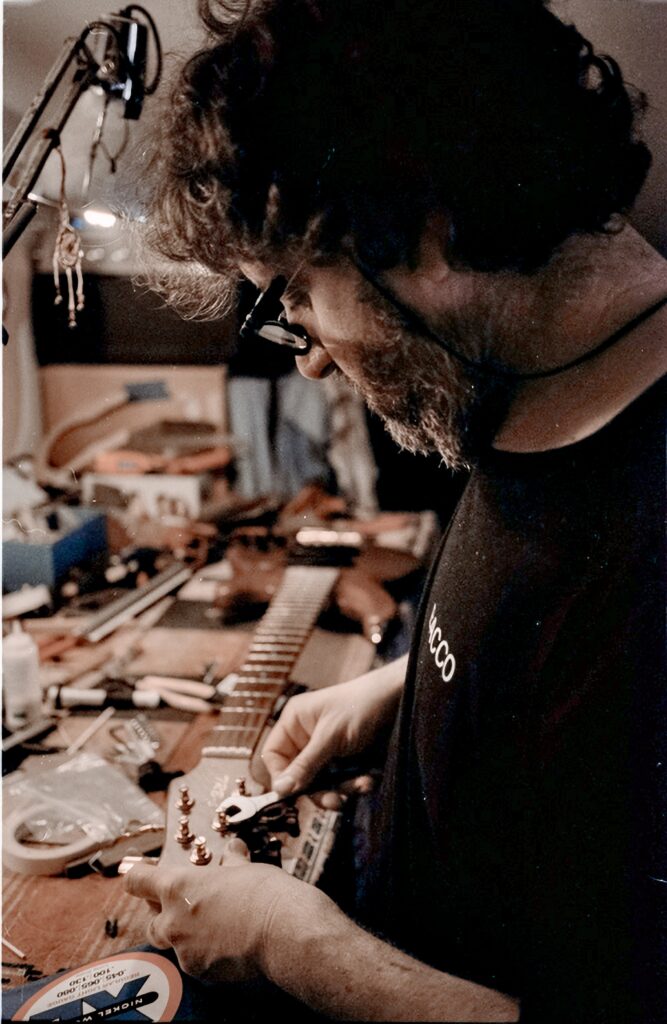
Sure, there are plenty of videos on content-sharing platforms showing every single minutia of the construction or repair process of wooden instruments; still, these videos are cold and pointless. They may matter as an information-delivery tool and sometime are also entertaining, but they cannot replace first-hand experience.
Even the most trivial task, such as restringing a guitar (in this case, a vintage Eko SA-396, the Italian response to Gibson ES335 in the eighties), is a testament to skill, precision and care.
After having removed the old strings, the first step is to clean and oil the fingerboard. Many guitarists — myself included — are lazy when it comes to maintenance tasks. Consequently, the neck is often the part that receives the least care.This is why a thorough cleaning is often necessary.
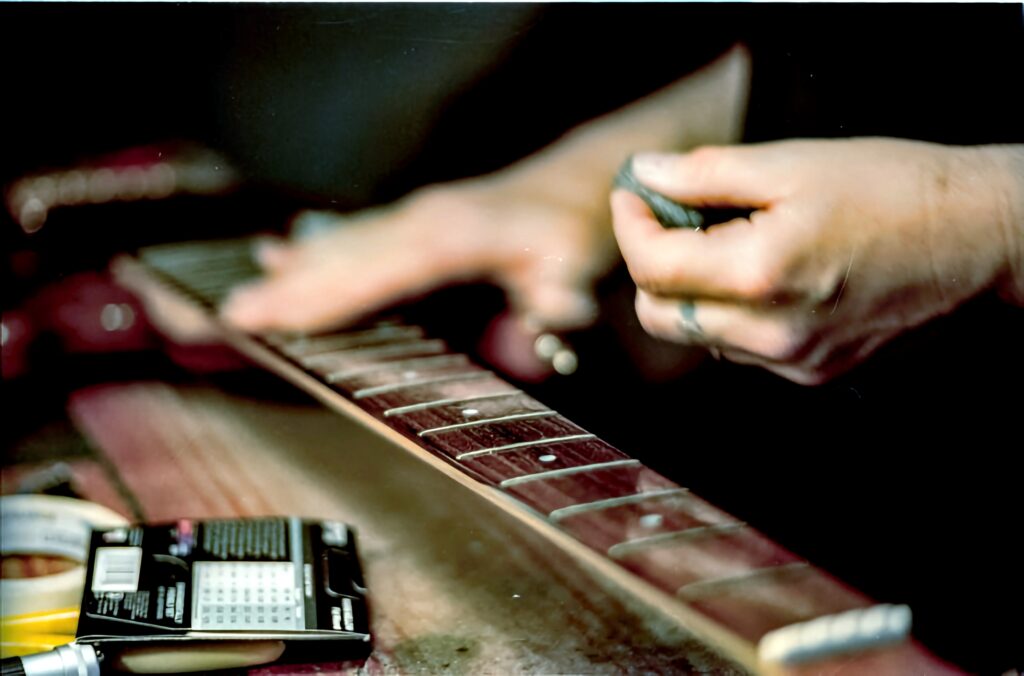
Then, comes the moment of changing the strings.
No movement is wasted; strings are cut to the proper length, threaded through the tailpiece, and wrapped around the tuning machines so as not to leave any excess that may ruin the sound or prick the fingers.
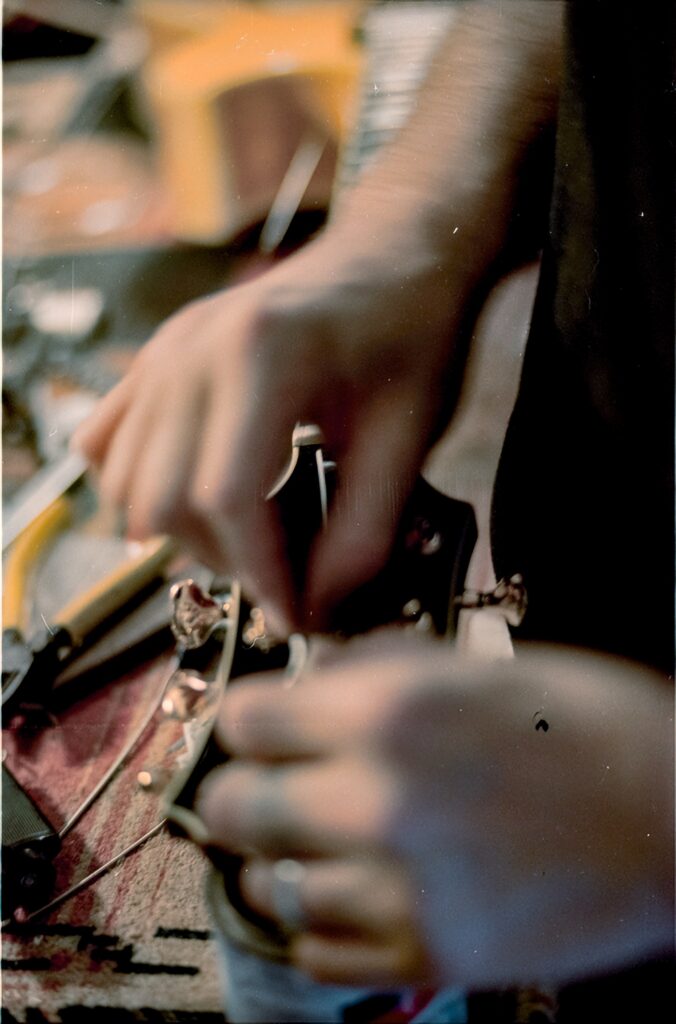
Once the strings are in place, checking the action — the strings’distance from the fingerboard — is a fundamental task. The wood is a living substance, so it may be bent, even for a tiny fraction of degree because of humidity or other factors, thus producing unwanted buzzes, so the adjustement through the trussrod may be necessary.
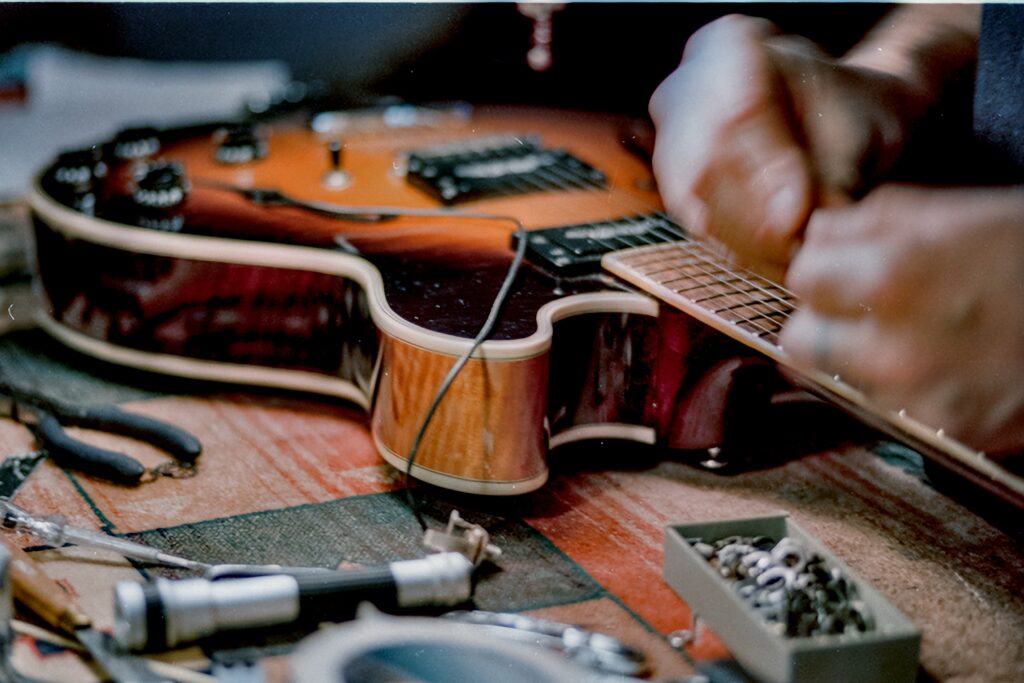
This post therefore lacks a ‘closing shot’.
Unfortunately, I didn’t take a picture of the final result because I was more focused on getting back to my flat to try out the new strings. Moreover, watching a luthier work his magic side by side with you makes you lose all sense of time. You can easily lose yourself in the fascinating art of the luthier, only to discover a couple of hours have gone by.
And when this happens and the list of mundane daily tasks starts filling your mind again, you wish you could stay in that dreamlike dimension of music, art and soul forever.
Share this post:
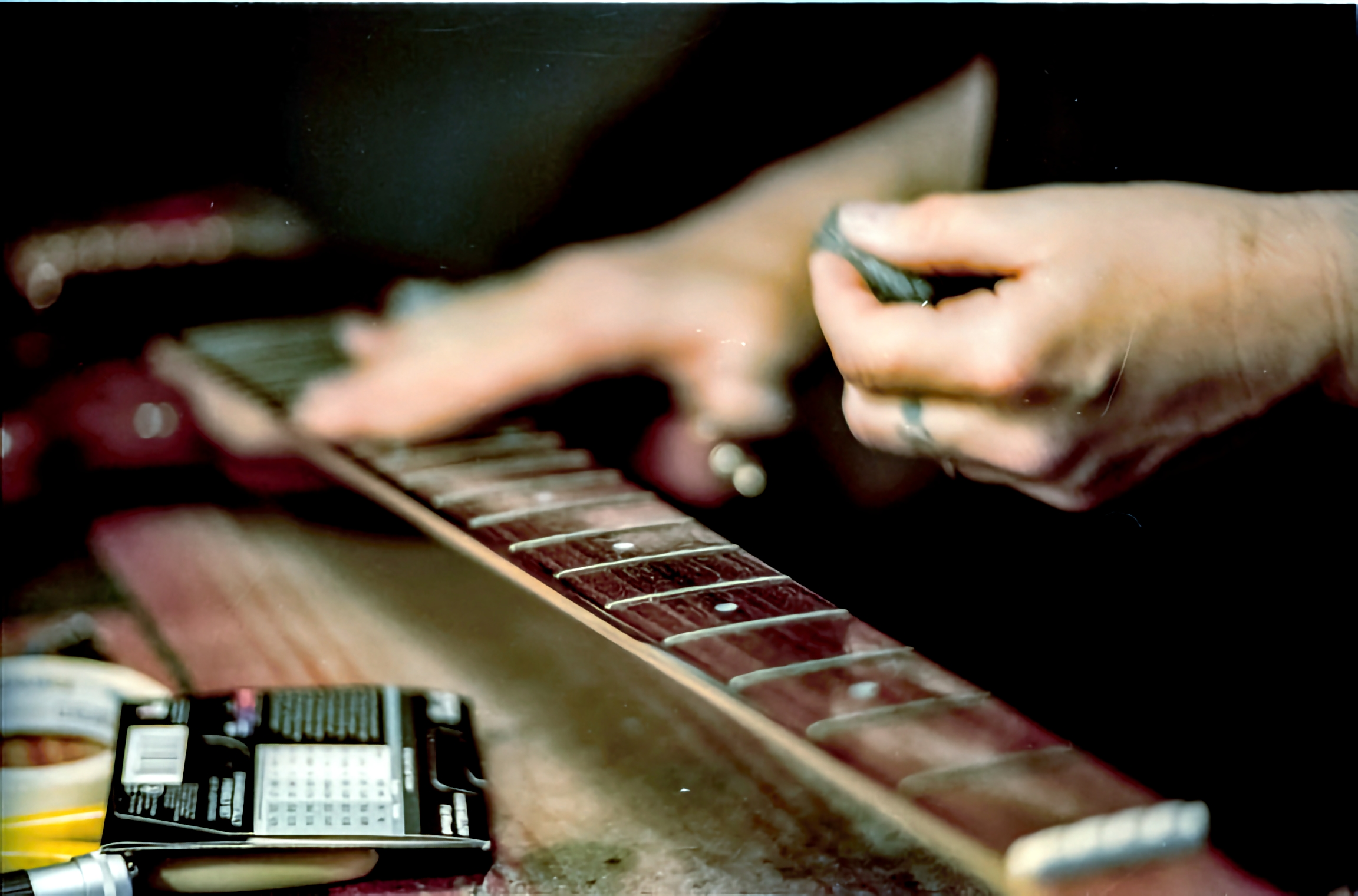







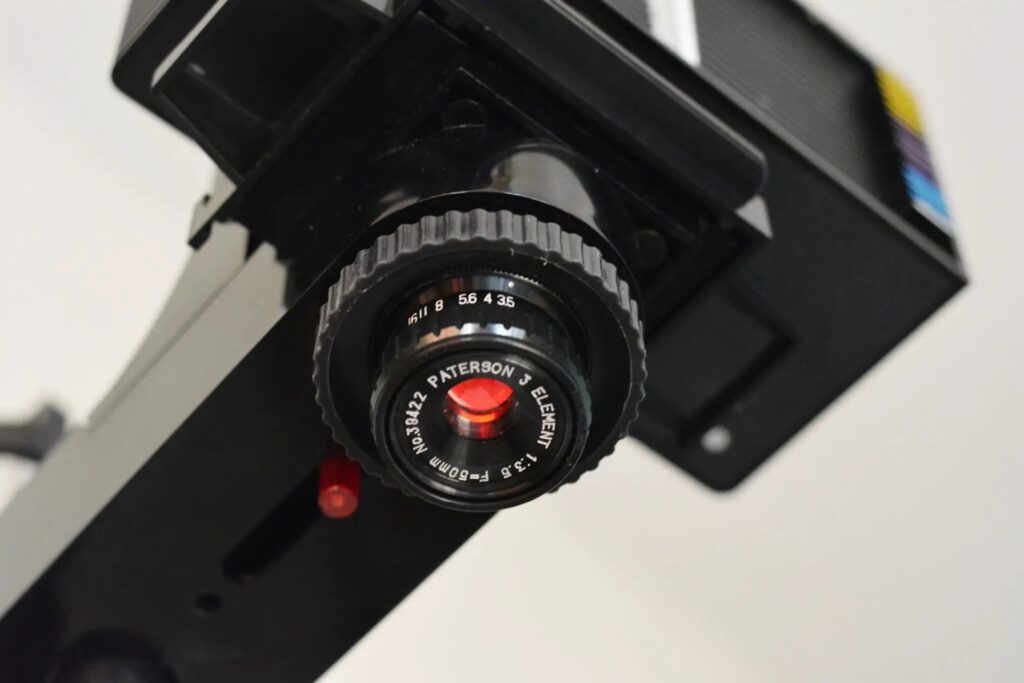
Comments
Umberto Fracassi on Inside a Master Luthier’s Workshop
Comment posted: 26/08/2025
It's pretty impossible not to feel in your shoes - and not to share the urge to go back home and feel "how it feels and rings".
Also, wood being all over the place in any fashion or age or shape, a luthier's workshop may offer excellent photographic hues and a "natural" scenery which, well, rings just good.
All the best,
Umberto
Gary Smith on Inside a Master Luthier’s Workshop
Comment posted: 26/08/2025
Depending on the state of the fretboard it would get a rub down with boiled linseed oil as needed.
Once upon a time I owned a Gibson 335 that had sustained the often-common headstock snap. The repair wasn't done by a master luthier and hence the guitar was nearly impossible to tune. The new Epiphone 335 that I recently acquired was perfection right out of the box (OK, I did polish the frets).
Thanks for an article on musical instruments!